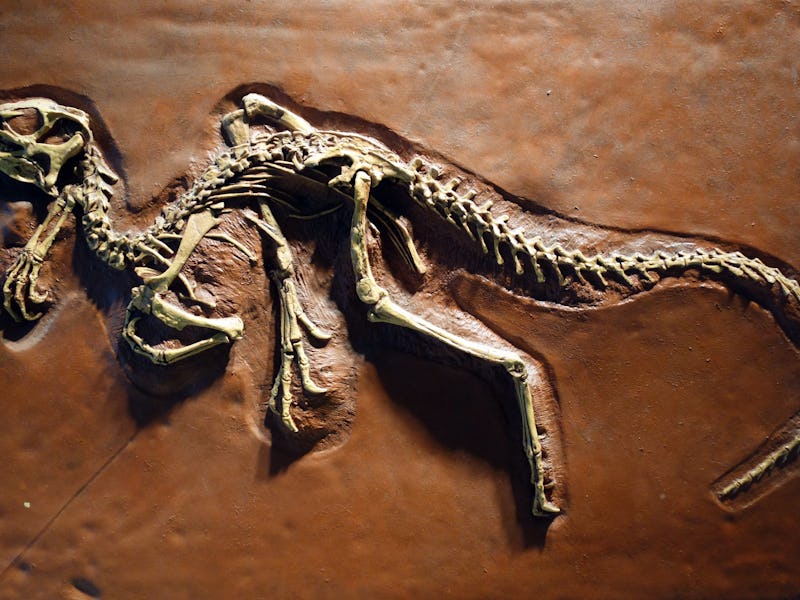New Dinosaur Species Keep Getting Discovered This Year — 3 Reasons Why
We're living in a new "Golden Age" for paleontology.

Paleontologists might be in a new golden age of discovery. According to scientist Stephen Brusatte, he and his colleagues in the field are finding an average of 50 new species — not just fossils or single bones, but entire species — a year, which is nearly a new dinosaur species a week. Brusatte shared some of the reasons for this sudden boom in finding dinosaurs.
Brusatte, a fellow at the University of Edinburgh, sat down for a Q&A with National Geographic to discuss his new book The Rise and Fall of the Dinosaurs: A New History of a Lost World and how it creates a new narrative surround the Tyrannosaurus rex and its demise. In addition to changing scientists’ understanding of the T. rex, Brusatte has also discovered 10 new types of dinosaur species, something that paleontologists of the past could only dream of doing in an entire lifetime. New technology, as well as multiple government policies, are just some of the latest developments that give paleontologists access to new data and dig sites, catalyzing what Brusatte calls a new “golden age” for the industry.
1. More countries are letting scientists dig
A huge win for paleontology has been the ability to dig in countries like China, Mongolia, Argentina, and other countries that had closed their borders to paleontological digs in the past. Since granting access to its mountainous regions and the Gobi desert, China has become a hotspot for discoveries. “Probably about half the new dinosaur species are coming from there,” Brusatte explained.
One such discovery was the raptor dinosaur Jianianhualong, which has led many paleontologists to argue that feathers and wings didn’t first evolve for flight. The slender, bird-like Jianianhualong suggests feathers evolved to keep dinosaurs warm before becoming an aid for flying.
2. New technology is improving data
In a paper published last month in the journal Nature, researchers were able to identify the bird that bridged the gap between bird and dinosaur through the use of CT scans. The Ichthyornis dispar lived 100 million years ago, but by piecing together CT scans of new fossils alongside several different specimens from existing museum collections, the scientists ended up with a fairly complete look at the toothed bird.
CT scanning has been in the news a lot for being the source of new paleontological discoveries. Whereas CT scans have been available in health industries since the 1970s, its growing popularity in paleontology and increased capabilities have allowed scientists to look at the brain, sense organs, sinuses, blood vessels, and nerves of a dinosaur just by scanning its skull. Brusatte used CT scanning of T. rex skulls to draw the conclusion that the size of the Tyrannosaurus brain relative to its body was comparable to the range of chimps, meaning it was probably a “much smarter animal than people give it credit for.”
Ichthyornis dispar may be the missing link between dinosaurs and beaked birds.
3. Diversity of scientists is helping to diversify discoveries
Part of the reason why countries like China opened its borders to more scientific digs was thanks to the growing population of paleontologists from within the country. Whereas the industry was once predominantly men from Western countries, “now you have this huge group of young people in China, Argentina, and other places, studying dinosaurs,” Brusatte said. “And they’re making a lot of new discoveries.”
Not only have scientists from China and other countries been able to open the door to new digging sites and advancements, but women have increasingly contributed to this year’s most important discoveries.
“It used to be an old men’s club…” Brusatte recalled, “but over the last few decades that’s started to change. My lab here in Edinburgh, for instance, is very female dominated. Of my eight Ph.D. students, seven are female.” Women such as Beijing-based Jingmai O’Connor, Ph.D., are mentioned in his book as being at the forefront of understanding the link between birds and dinosaurs. O’Connor is considered the world’s expert on the earliest birds found in China.
Thanks to these technological advancements and the diversity of both scientists and locations for research, paleontology has become a globally growing industry, and the results for science are staggering.